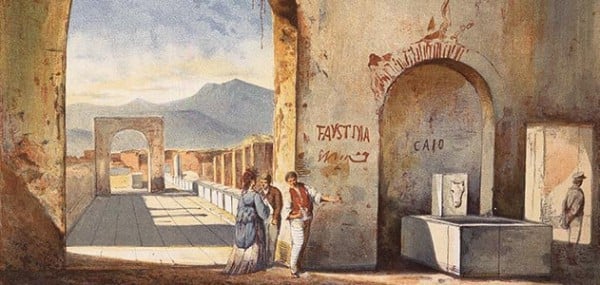Art World
Ancient Romans of Pompeii Loved Street Art Too


Henri Neuendorf

Pompeii’s graffiti was long overlooked by archaeologists who were too excited by the ancient city’s rediscovery in the 18th century to pay mind to the preservation of seemingly mundane writing on the city’s walls. But, thanks to a new book by Kristina Milnor, new insight into this early street art abounds.
Rome’s citizens used graffiti as a vehicle to express frustrations about everything from politics to personal relationships. The frequent inclusion of banal obscenities has led commentators to write off the writing as the insignificant errant thoughts of adolescent pranksters. However, in a time before print, let alone the Internet, buildings and walls were the citizens’ only outlet for self-expression.
Political campaigning (“Caspius for aedile”) and exclamations of love (“Rufus loves Cornelia”), are written next to crude warnings (“Beware of shitting here”), and insults (“Narcissus is a giant cocksucker”).
At the same time, graffiti seemed to divide opinion then as much as it does now. Plutarch wrote in AD 100 “There is nothing written in them which is either useful or pleasing–only so-and-so ‘remembers’ so-and-so, and ‘wishes him the best,’ and is ‘the best of his friends,’ and many things full of such ridiculousness.”